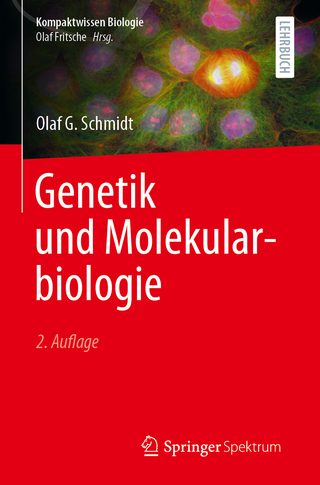
Females Are Mosaics
Oxford University Press Inc (Verlag)
978-0-19-992753-1 (ISBN)
Barbara Migeon, MD, has held fellowships in pediatrics, endocrinology and genetics. She is board certified in pediatrics, biochemical genetics and cytogenetics. She was the founding director of the Hopkins PhD Program in Human Genetics. Her research has been focused on the molecular mechanisms of X inactivation in human cell and the clinical consequences of the single active X chromosome.
Introduction ; Part I Background ; Chapter 1 Sex Differences in Disease ; 1.1. Males More Vulnerable at Every Age ; 1.2. Vulnerability of Males Leads to Sex-Specific Disease ; 1.3. Summary and Speculations ; Chapter 2 Evolution of the Human Sex Chromosomes and a Portrait of the Human X ; 2.1. Chromosomal Basis of Sex Determination ; 2.2. The Human Sex Chromosomes Evolved from Reptilian Autosomes ; 2.3. Degeneration of the Y Chromosome ; 2.4. Ohno's Law and the Conservation of the Original X ; 2.5. Residual Homology and the Pseudoautosomal Regions ; 2.6. Genetic Portrait of the Human X ; 2.7. Summary and Speculations ; Chapter 3 X Chromosome Dosage Compensation: An Overview ; 3.1. X Chromosome Dosage Compensation ; 3.2. Heterochromatin and Chromosome Silencing ; 3.3. Role in Sex Determination ; 3.4. Mechanisms of Dosage Compensation in Other Organisms ; 3.5. Mechanisms of Dosage Compensation in Mammals ; 3.6. Summary and Speculations ; Chapter 4 The Discovery of X Chromosome Inactivation ; 4.1. The Lyon Hypothesis ; 4.2. General Scheme of Mammalian Dosage Compensation ; 4.3. Summary and Speculations ; Chapter 5 Experimental Models for X Inactivation Studies ; 5.1. Spontaneous Human Mutations that Interfere with Inactivation ; 5.2. X-Linked Protein Variants Distinguish Parental Origin of X Chromosomes ; 5.3. Characterizing the Inactive X in Human Cell Cultures and Clones ; 5.4. Mouse-Human Hybrids Separate Inactive from Active X ; 5.5. Mouse Embryonic Stem Cells for Manipulating the Early Steps in X Inactivation ; 5.6. Transgenic Mice as a Functional Assay ; 5.7. Assays for X Inactivation Patterns in Heterozygotes ; 5.8. Summary and Speculations ; Part II. Themes and Variations of X Inactivation ; Chapter 6 Theme 1: The Initial Steps-Creating the Active and Inactive X ; 6.1. Characteristics of the Inactive X Chromosome ; 6.2. Time of Initiation in the Embryo ; 6.3. Cis Inactivation ; 6.4. The Master Control Region: XIC and Xist ; 6.5. Silencing the Inactive X Chromosome ; 6.6. Single Active X Versus X Inactivation ; 6.7. Choosing the Active X Chromosome ; 6.8. Summary and Speculations ; Chapter 7 Theme 2: Subsequent Steps-Spreading and Maintaining Inactivation ; 7.1. Spreading Inactivation by Modifying Chromatin ; 7.2. Maintaining Inactivation by DNA Methylation of CpG Islands ; 7.3. Escape from Inactivation ; 7.4. Transient X Inactivation in Germ Cells ; 7.5. Induced X Reactivation in Placental Cells ; 7.6. Role of DNA Replication in X Inactivation ; 7.7. Summary and Speculations ; Chapter 8 Variations 1: Evolution of the X Inactivation Center ; 8.1. Variations on the Themes of X Inactivation ; 8.2. Divergence in the Physical Map ; 8.3. The Effect of Map Changes on X Inactivation in Mouse and Man ; Chapter 9 Variations 2: Stability of the Inactive X ; 9.1. Stability of X Inactivation & DNA Methylation ; 9.2 Genes that Escape Inactivation ; 9.3. Summary and Speculations ; Chapter 10 Variations 3: Choice of Active X ; 10.1. Primary Nonrandom X Inactivation ; 10.2. Paternal X Inactivation ; 10.3. Relationship of Paternal X Inactivation to Genomic Imprinting ; 10.4. Does Antisense Transcription Have a Role? ; 10.5. Evolution and Tinkering ; 10.6. Effect of Inactivation Timing ; 10.7. Summary and Speculations ; Part III. Medical Consequences of X Inactivation ; Chapter 11 The Single Active X ; 11.1. Coping with a Monosomy X ; 11.2. Dosage Compensation of the Active X ; 11.3. Sex Differences in Susceptibility to Disease ; 11.4. Viability of Turner Syndrome, Klinefelter Syndrome, and X Chromosome Aneuploidy ; 11.5. X Deletions, Ring X Chromosomes, X Duplications, and Functional Disomy ; 11.6. X/Autosome Translocations and Spreading of Inactivation ; 11.7. Polyploidy and the Choice of Active X ; 11.8. Summary and Speculations ; Chapter 12 Mosaicism ; 12.1. The X-Linked Phenotype Is Dominant at the Cellular Level ; 12.2. Females Are Mosaics ; 12.3. Interaction between Mosaic Cell Populations ; 12.4. Skewing of X Inactivation Patterns ; 12.5. Effect of X Inactivation on Clinical Phenotype ; 12.6. "Manifesting" Heterozygotes ; 12.7. Summary and Speculations ; Chapter 13 Epimutations, Chromatin Disorders and Sex Differences in Phenotype ; 13.1 Epimutations Usually Cause Somatic Diseases ; 13.2 Epimutations in Imprinting Disorders ; 13.3 Epigenetic Regulation of Autosomal Gene Expression by Sex Chromosomes ; 13.4 Disorders of the Epigenetic Machinery ; 13.5 Sex Differences in Manifestations of Chromatin Disorders ; 13.6 Treatment of Chromatin Disorders ; 13.7 Summary and Speculations ; Chapter 14 Determinants of Female Phenotypes ; 14.1. The Dynamic Effect of Interacting Cell Populations on the Health of Females ; 14.2. The Effect of X Inactivation on Normal Female Phenotype and Cell Diversity ; 14.3. Epilogue ; Appendix A Descriptions of Model X-linked and Other Relevant Diseases ; Appendix B Sex Chromosome Aneuploidy, Polyploidy, and Parthenogenetic Conceptuses ; Appendix C Effect of X Inactivation on Phenotype and Cell Selection in X-linked Disorders ; Glossary ; References ; Index
| Erscheint lt. Verlag | 30.1.2014 |
|---|---|
| Verlagsort | New York |
| Sprache | englisch |
| Maße | 236 x 163 mm |
| Gewicht | 612 g |
| Themenwelt | Medizin / Pharmazie ► Medizinische Fachgebiete ► Gynäkologie / Geburtshilfe |
| Studium ► 2. Studienabschnitt (Klinik) ► Humangenetik | |
| Studium ► Querschnittsbereiche ► Prävention / Gesundheitsförderung | |
| Naturwissenschaften ► Biologie | |
| ISBN-10 | 0-19-992753-7 / 0199927537 |
| ISBN-13 | 978-0-19-992753-1 / 9780199927531 |
| Zustand | Neuware |
| Haben Sie eine Frage zum Produkt? |
aus dem Bereich


